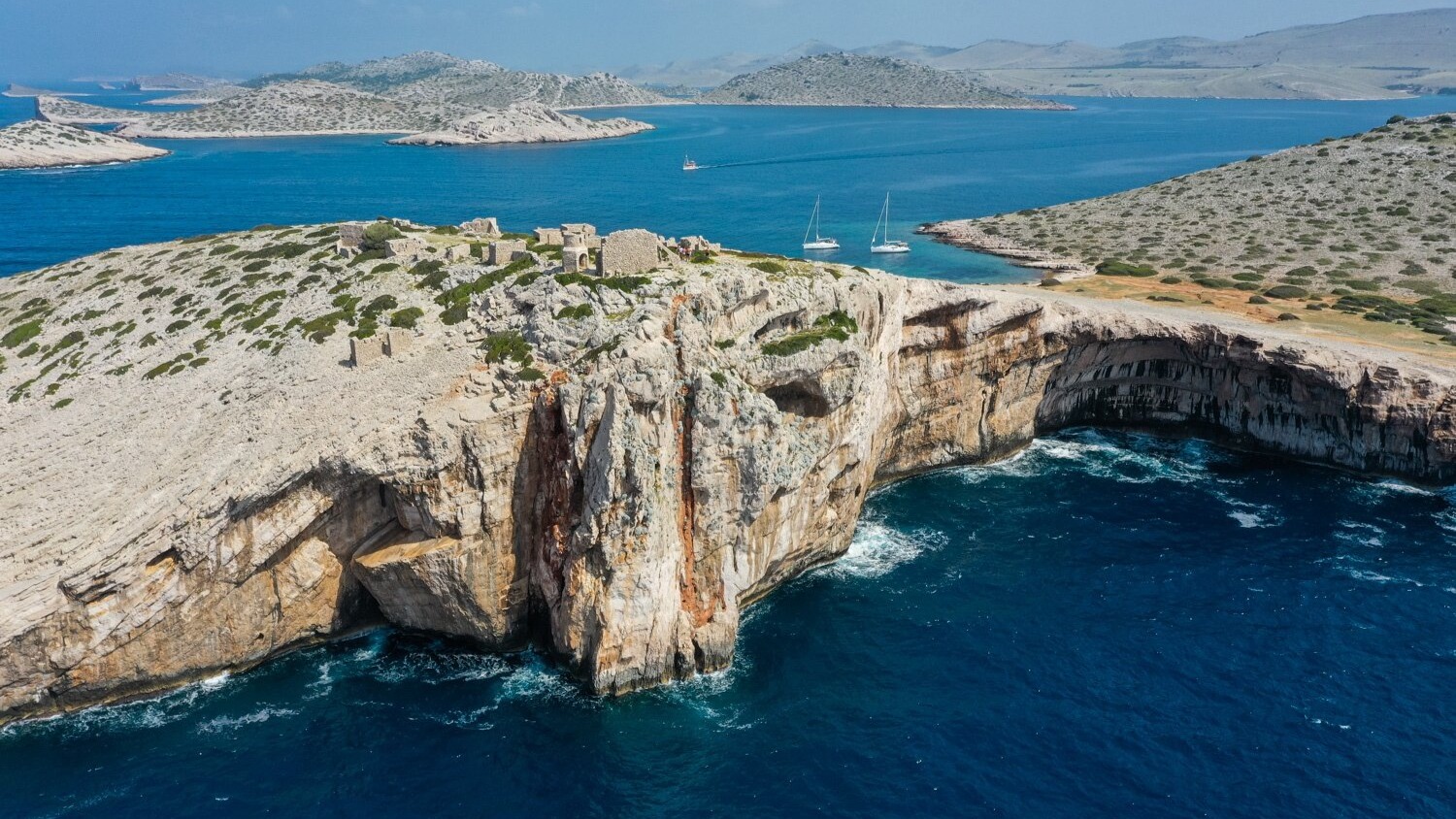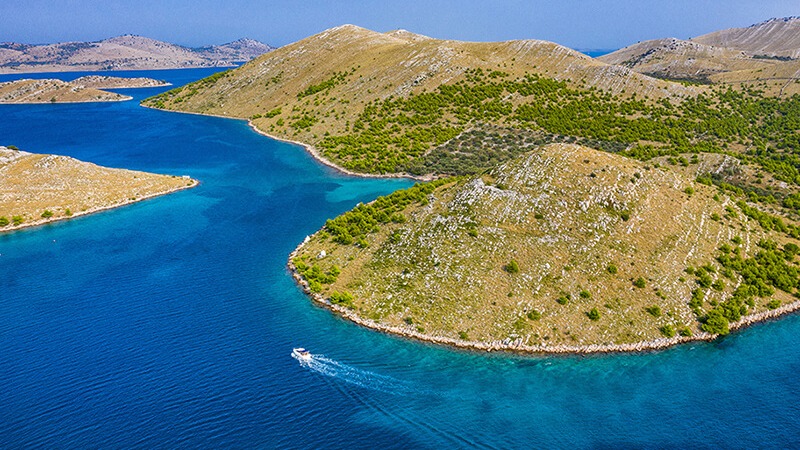Kornati




Explore Kornati
The Kornati archipelago, as a separate and special island group located between the islands of Šibenik and Zadar, covers an area of about 320 km2 and includes about 150 land units, permanently or often located above the sea. The archipelago makes up 12% of all the islands of the Croatian Adriatic – 1264 islands, of which 67 are inhabited. It has long attracted the attention of sailors, divers, mountaineers and other nature lovers.
The average area of the Kornati island is only 0.55 km2, but it should be taken into account that Kornat (32.5 km2) and Žut (14.8 km2) occupy about 70% of the mainland. If we add Piškera, Levrnak, Lavsa and Sita, we get 88% of the total land area of the Kornati archipelago (69,452,963 m2). Only nine islands are larger than one square kilometer, and 76 of them are less than one hectare.
Kornati National Park covers most of the Kornati waters. Due to the exceptional landscape beauty, interesting geomorphology, extremely indented coastline, as well as the rich communities of the underwater ecosystem, the islands were declared a national park in 1980. Nowhere in the world is there such a fascinating, branched, stone labyrinth of islets as the one within the Kornati National Park. This archipelago is known as the most indented archipelago in the entire Mediterranean.
The appearance of Kornati was influenced by many factors. The islands have been developing for many years, and their beauty is that they are actually still being formed. They are shaped by the bora wind, the sun and the sparse vegetation. Throughout history, the human hand has certainly had an additional influence.
The most impressive part of the Kornati landscape are the steeps that rise on the sides of the islands facing the open sea, like those on the island of Mana. However, the National Park does not only covers islands, but also the sea waters, which are extremely valuable and rich. Flora and fauna include 300 different species of algae, hundreds of species of corals, mollusks, polychaetas, crustaceans, fish, dolphins, turtles and other organisms. Extremely important is the seagrass Posidonia, a Mediterranean endemic plant that grows only in the clear sea. This plant is often called the "lungs of the sea", and many organisms grow and develop with it, which it provides a habitat for.
Kornat Island - The largest (32.44 km2) island of the famous "lunar" archipelago of the Kornati Islands. It was from here that he received his name.
Levrnaka Island - is a beautiful, uninhabited island in the Kornati archipelago. Its area is 1.84 km² and the length of the coastline is 10,206 km. On the southwest side of the island is Lojena beach. It is a picturesque bay with white pebble shore and sandy sea bottom. The water here is turquoise blue and almost reminiscent of the Caribbean. A short hike to the island’s 110-meter-high elevation is also recommended. From up here you can enjoy a magnificent view.
Mana island - is certainly one of the most unusual islands you will ever see. It has the longest (1350m) vertical cliffs in the Kornati islands. The view from the 65m high rocks is spectacular. For the 1959 film, a traditional Greek village set was created on a hill. The remains of the stone buildings fit perfectly into the local landscape and are one of the most frequently photographed motifs on Kornati.
